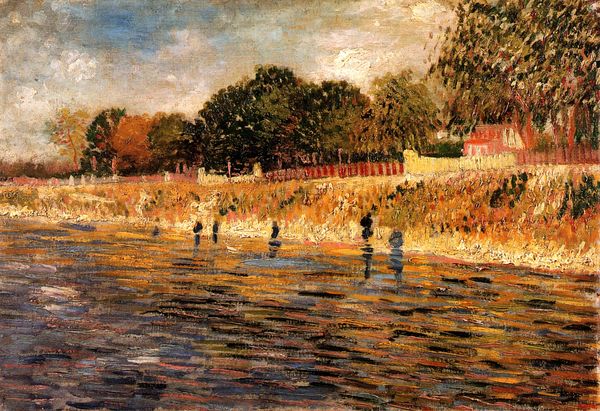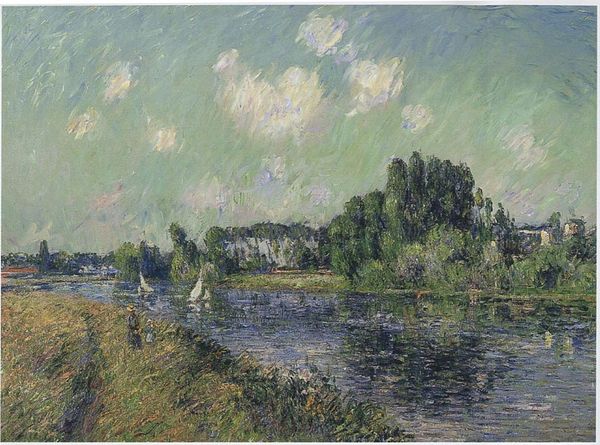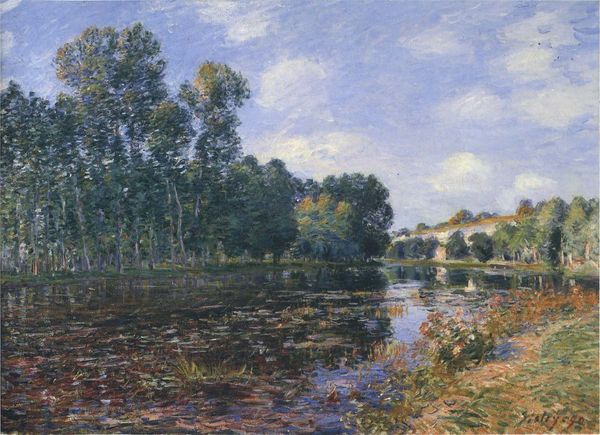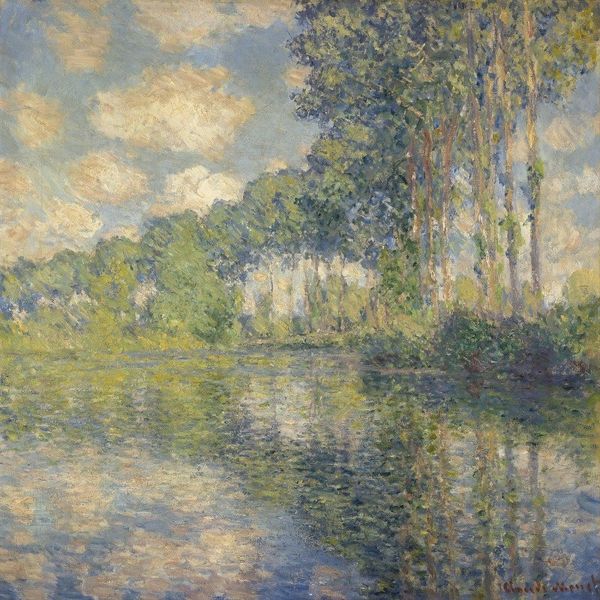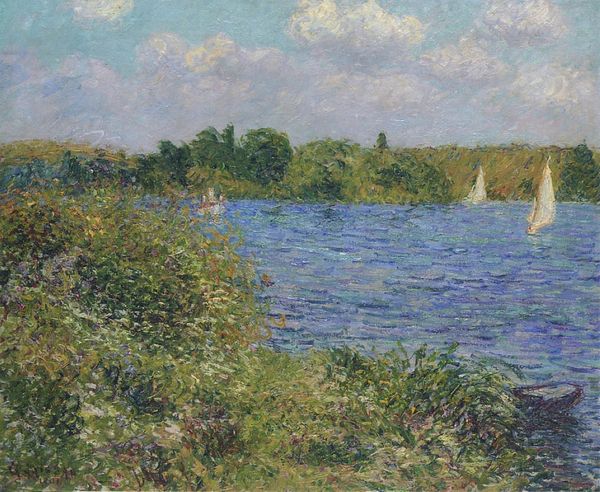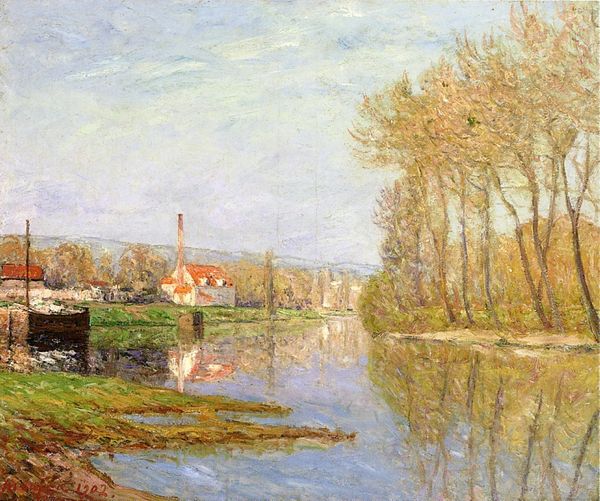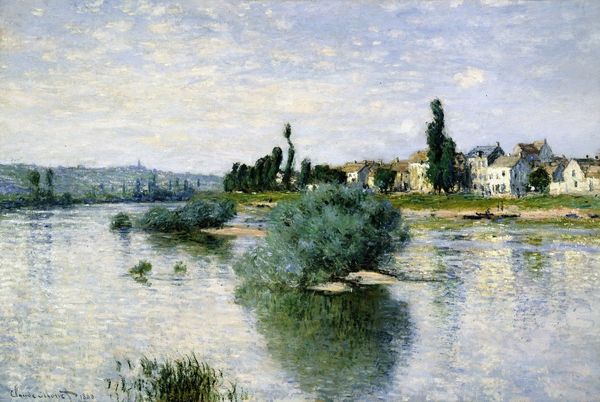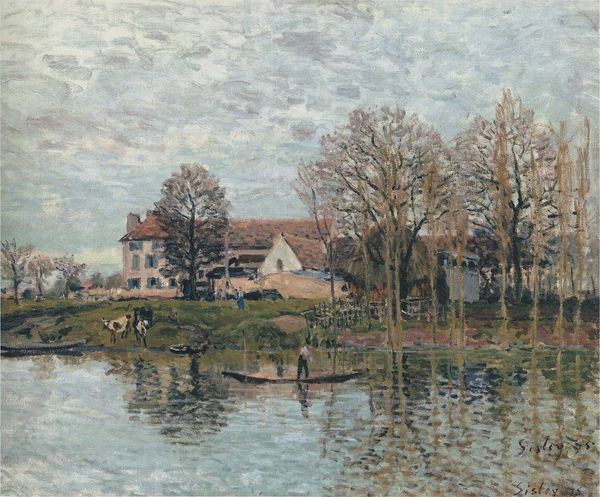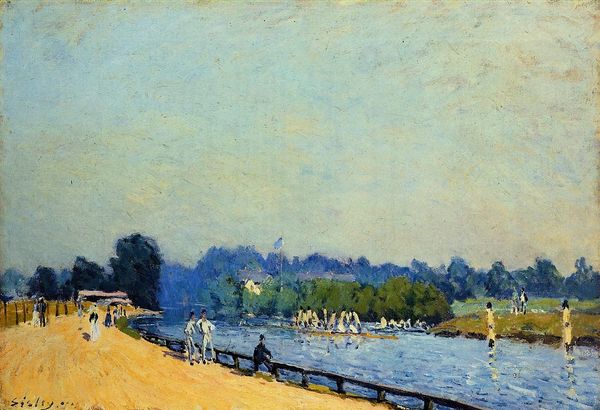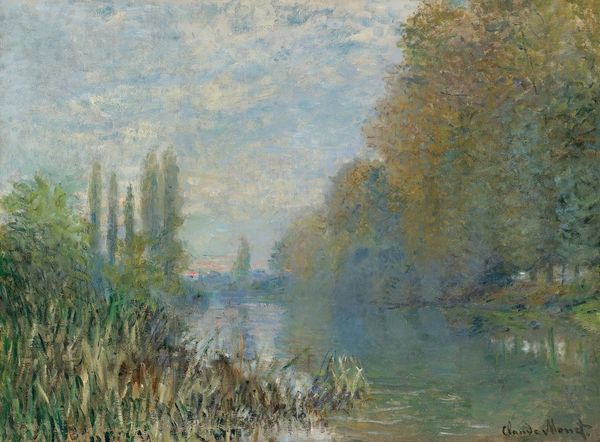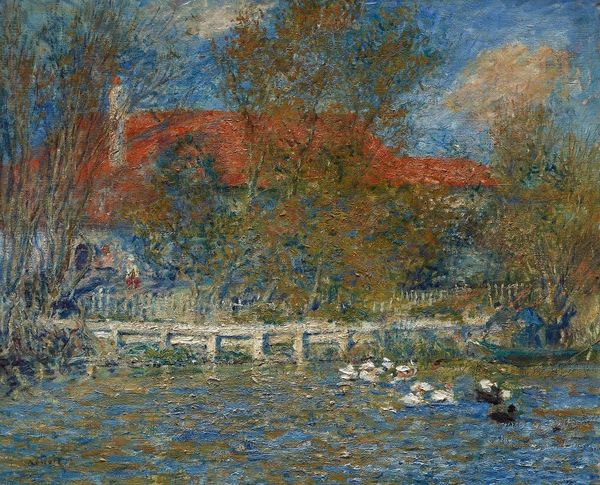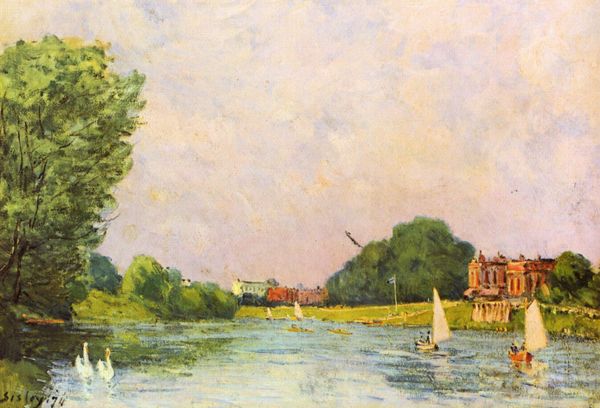
painting, plein-air, oil-paint
#
painting
#
impressionism
#
plein-air
#
oil-paint
#
landscape
#
river
#
figuration
#
oil painting
Copyright: Public Domain: Artvee
Vincent van Gogh composed this painting, Bank of the Seine, using oil on canvas. At first glance, the eye is drawn into the shimmering surface of the Seine, an almost tactile rendering through the artist’s brushstrokes. This is a structured landscape, divided horizontally into three distinct bands. The river dominates, followed by the bank and then the skyline. Note how the reflections in the water are not mere copies of the forms above. Instead, Van Gogh employs a semi-abstract pattern to capture the river’s fluid essence. The figures standing in the water are simplified to their most essential forms, almost merging with their watery reflections. This technique reflects the influence of Impressionism, where the emphasis shifts from precise representation to capturing sensory experience. The painting destabilizes traditional landscape conventions, moving towards a more subjective and emotional representation of nature. Van Gogh’s use of color and form invites us to consider the symbolic interplay between reality and perception.
Comments
No comments
Be the first to comment and join the conversation on the ultimate creative platform.
